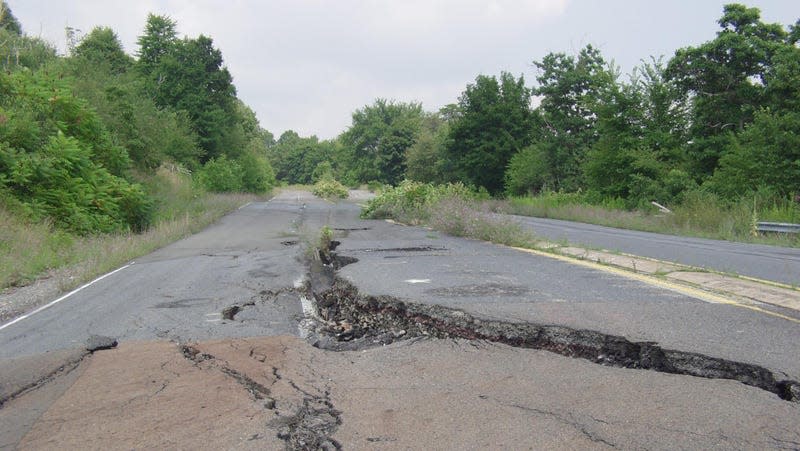Heat Waves Are Buckling The Roads Every Year And It Keeps Getting Worse

As a heat dome descends over the United States this week, temperatures are soaring across the Midwest and Northeast. Besides the potentially fatal heat exhaustion, highways across the country are literally buckling under the scorching heat. The phenomenon has happened for decades, but climate change is intensifying heat waves and increasing their frequency. At Jalopnik we’ve done at least one story on road buckling every summer for the past three years.
The Environmental Protection Agency states that the number of heat waves has tripled between the 1960s and the 2010s. It hasn’t been this bad since the Dust Bowl in the 1930s. The period during which heat waves strike has also expanded by nearly 50 days, starting in late spring and stretching into fall. The recipe for increased road buckling is simple, just more heat. The Nebraska Department of Transportation explains:
“A pavement blow-up occurs when the roadway surface expands at a crack or joint where moisture has seeped in. That crack weakens the pavement and the heat causes the pavement to buckle and warp. This usually occurs on very hot afternoons, as the maximum temperature for the day is reached, typically during afternoons with 90-degree or hotter temperatures.”
“A blow-up generally begins by slight spalling at the joint. The condition may either get progressively worse or the blow-up may occur instantaneously. In most cases, temporary or emergency repairs will be required to accommodate traffic.”
The road material does play a role in how susceptible the pavement is to buckling. Asphalt is more flexible than concrete. It’s better able to withstand temperature changes before breaking apart as a result. Some state DOTs have special mixes to deal with their particular climate. KJZZ in Salt Lake City noticed that Nevada has had less severe road buckling than Utah. A Nevada DOT spokesperson told the station about its polymer modified asphalt blend stating:
“It’s almost like a recipe. You might put a certain amount in, or you would use that type of asphalt here but not in [one] certain road because of the amount of traffic. So, each state approaches that a little bit differently.”
While special blends do help, there’s only so much agencies can do to protect roadways from the heat. The road will warp and break away when the temperature gets high enough. There’s just no way around it other than attempting to make the climate more stable.

 Yahoo Autos
Yahoo Autos 